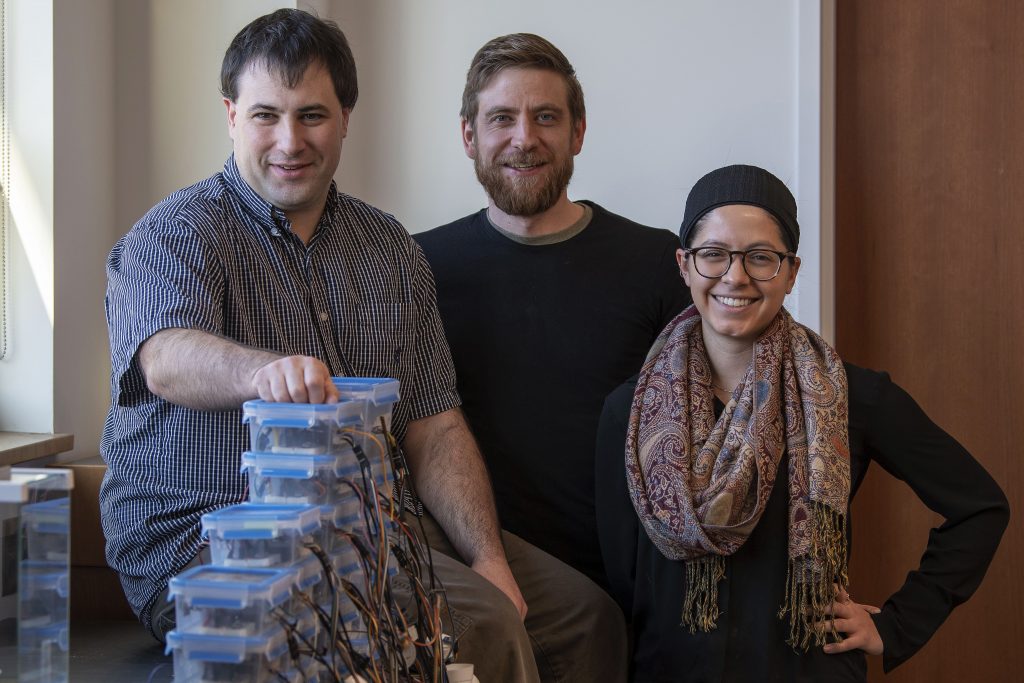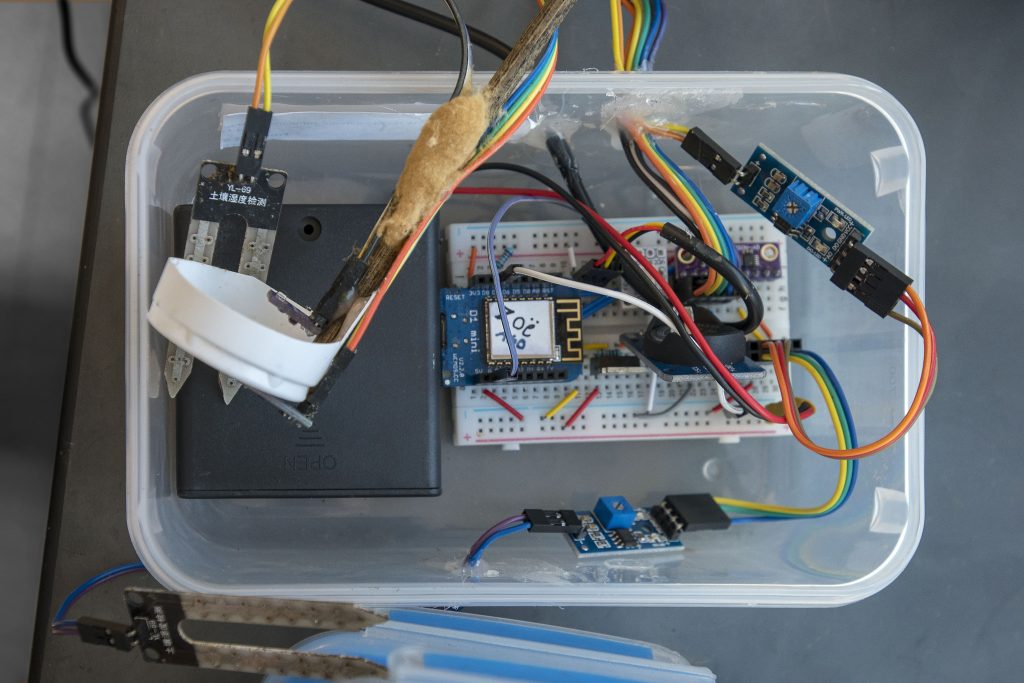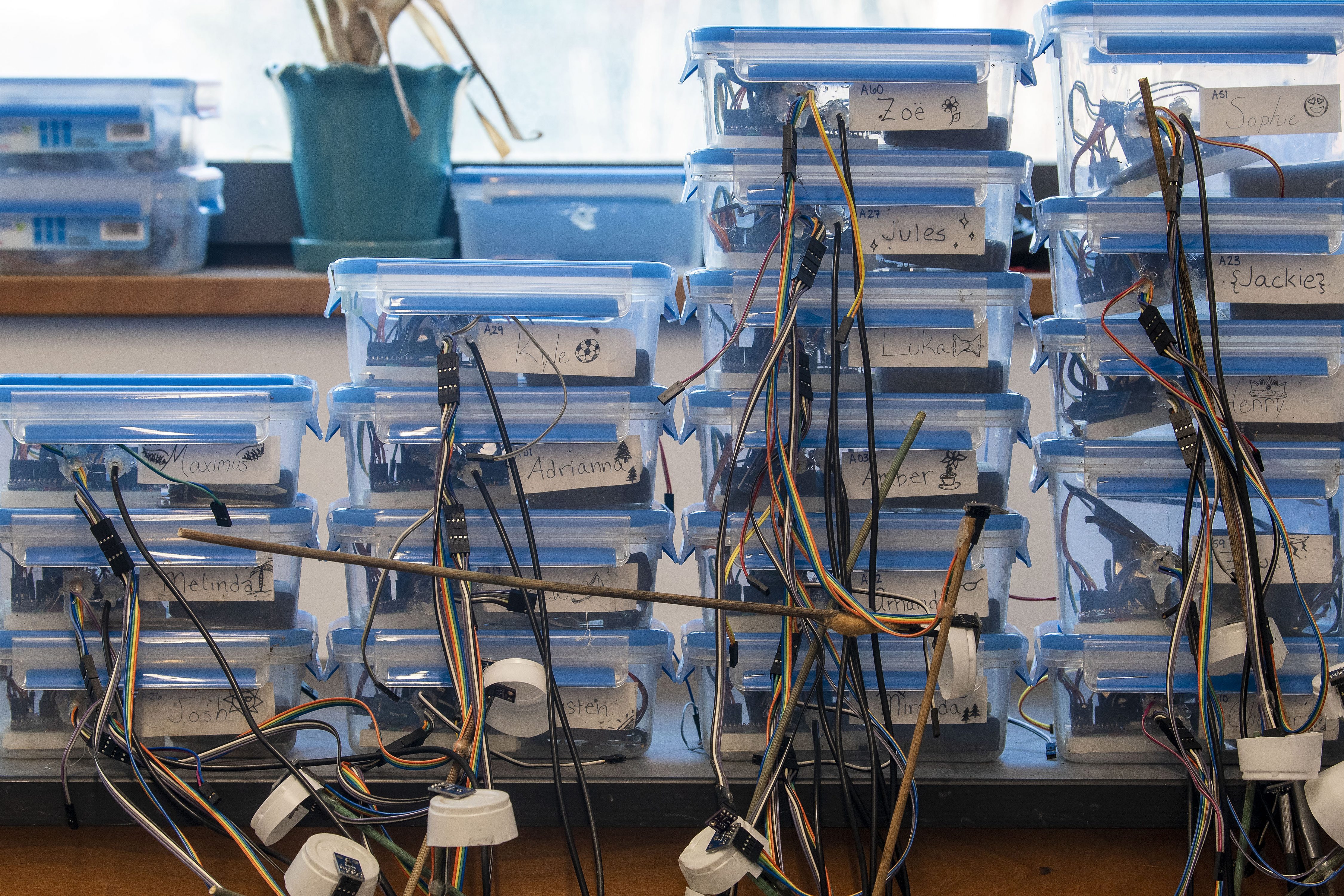
Scientific research can be a costly undertaking, oftentimes so much so that projects become cost-prohibitive. So what happens when the research is too expensive, but the data is too important to leave uncollected?
You get creative. And that is exactly what UConn ecology and evolutionary biology researchers James Mickley ’18 Ph.D. and Timothy Moore ’18 Ph.D. have done. Their article about the tools they developed for getting their research done has been published recently in Methods in Ecology and Evolution.
Mickley and Moore were interested in studying ecosystem responses to climate change. When studying ecosystems and the myriad components interacting within them, high-tech items such as camera traps and remote sensors become essential tools of the trade. Researchers simply cannot be everywhere all the time, taking numerous and ongoing measurements.
Moore says technology is more important now than ever to help us learn about the ways ecosystems are responding to climate change. He says current knowledge about these responses relies on broad-scale – think regional – studies, but these studies are limited by the amount of fine-scale data available. There are vast amounts of information in the fine details.
An example might be a plant growing in tiny habitats such as under the shade of a tree, or in the cracks of a rock, that may not be able to survive in the broader habitat around it.
This is where Moore and Mickley encountered the problem: to gather the fine-scale data, they would need hundreds – if not thousands – of sensors, costing hundreds of dollars apiece.
Without large sums of money to purchase the sensors, but recognizing the need for these data, Moore and Mickley saw opportunity rather than frustration.
They set about building their own sensors, and acquiring some new skills in their spare time, all while finishing up their Ph.D.s. After trial, error, soldering, and tinkering, Moore, Mickley, and a team of undergraduates including Amber DeRobertis ’18 (CLAS), Emilia Pfisterer ’16 (CLAS), and Emma Saavedra ’19 (CLAS), produced a small army of fully functional sensors, each costing under $20. They have since deployed and are using the sensors – which they’ve named Environmental Microcontroller Units, or EMUs – to collect data for their research.
Plug and Play
Through the development process, Moore and Mickley realized how customizable the EMUs were. For almost any parameter, there is a sensor component to measure it that can be easily integrated into the design.
Mickley is using sensors for temperature, humidity, light, and soil moisture, to look at how the environment and forest fragmentation in Connecticut affect food webs: trees in the forest, the caterpillars that eat them, and the birds that eat the caterpillars.
Moore conducts research on the impact of climate on plants in South Africa. He plans to deploy EMUs to investigate the role of microenvironmental variation in shaping where plants do and don’t live. Outside of his fieldwork, he even has a unit measuring data from his house, and points to a graph on his computer screen with data from the previous day, where, by looking at temperature data, he can tell exactly what time he got home.
Moore says the work happening in Connecticut is serving as a large-scale proving ground for the sensors. “We need this data, because we need to understand the climatic conditions that are provoking responses in the state’s ecosystems.”
In addition to the inventors’ own research, several colleagues are already using EMUs in their research.
The EEB greenhouse has used them to see how light levels differ in various greenhouses. A colleague in Montana is using them to monitor the pressure within pressure chambers over the internet. And a graduate student at UConn has used them to monitor humidity over the internet as she dehydrated algae.
“The possibilities are endless,” Mickley says.
In the spirit of facilitating research more broadly, the team has made information about how to construct them available through open source, so that anyone who is interested can make one and collect and share data.

The researchers have made it as easy as possible to duplicate their methods, by providing a parts list, complete with notes for components, and detailed videos produced by DeRobertis showing how to construct an EMU.
Citizen scientists can immerse themselves by building the units, coding, deploying, monitoring, and even sharing their data. With readily accessible, inexpensive sensors available, it is now possible to collect the fine-scale data the researchers originally sought.
The versatility and low cost are key. “There are so many different ways these can be customized,” says Moore. “EMUs can help answer a lot of questions.”
Mickley says the cost-effectiveness of the EMUs has allowed them to take measurements in forest plots all across Connecticut.
A major part of the caterpillar community in the last several years has been gypsy moths, and they have done tremendous damage to trees across Connecticut. Fortunately, there is a fungus that attacks and kills gypsy moths, but recently it has not been so successful. The researchers think the fungus functions better at controlling gypsy moths under wet conditions.
To test this, they made EMUs with sensors that measure soil moisture and humidity. They also installed light sensors to measure the degree to which the trees were defoliated over time over the summer. The sensors work so well, the next hurdle will be to interpret the huge amount of data the EMUs have gathered.
Other future plans include expanding the areas sampled; and the team is also considering outreach opportunities, such as developing teaching modules to facilitate EMU construction and data collecting in schools.
If you would like to expand some skills and build your own EMUs, visit this page to get started, or contact the researchers: james.mickley@uconn.edu or timothy.e.moore@uconn.edu



